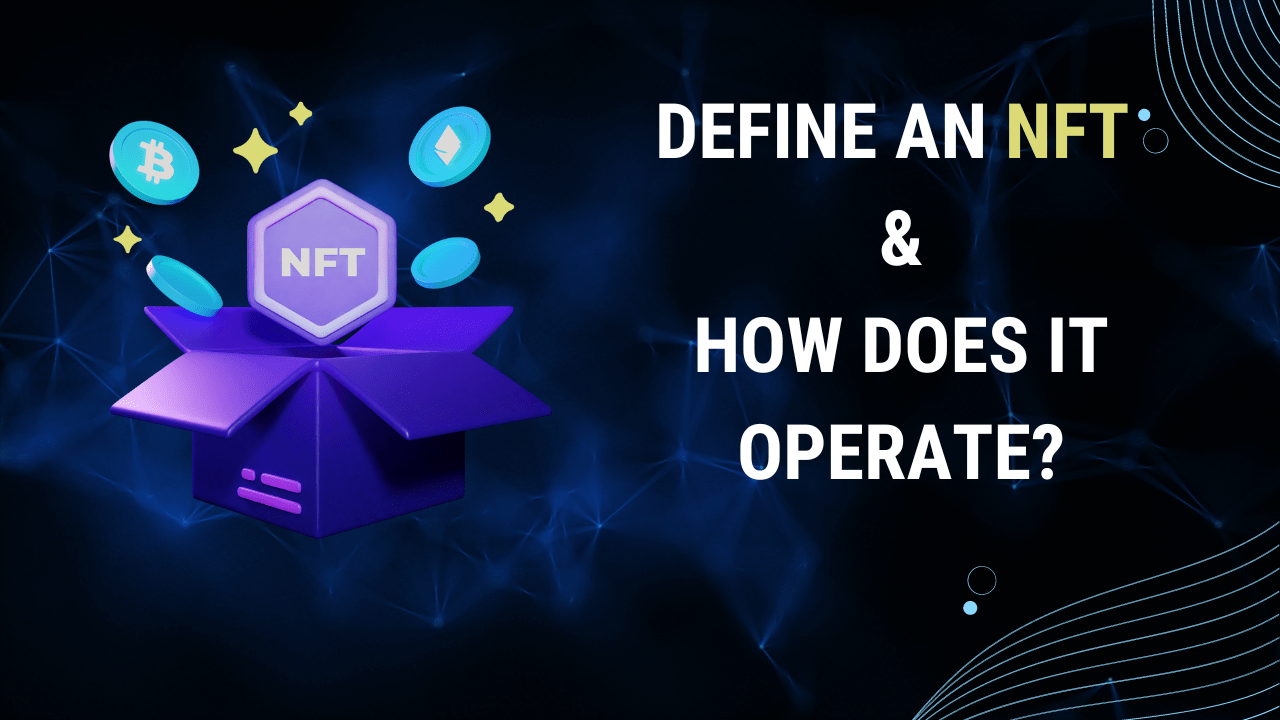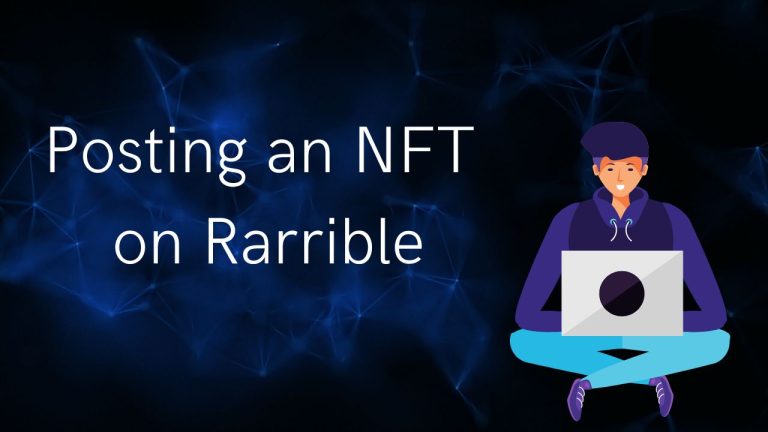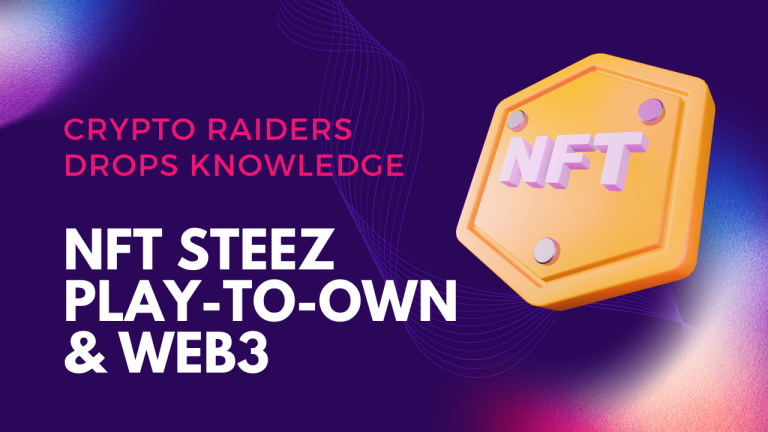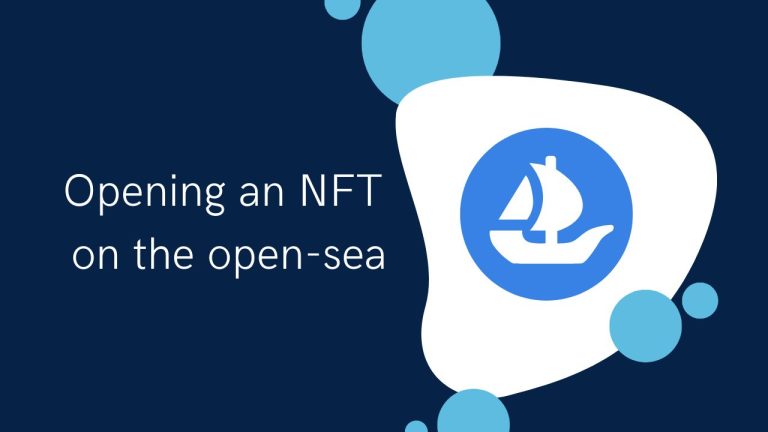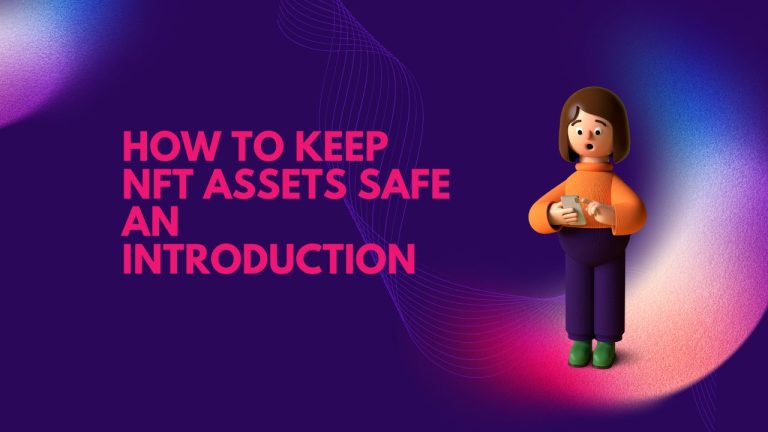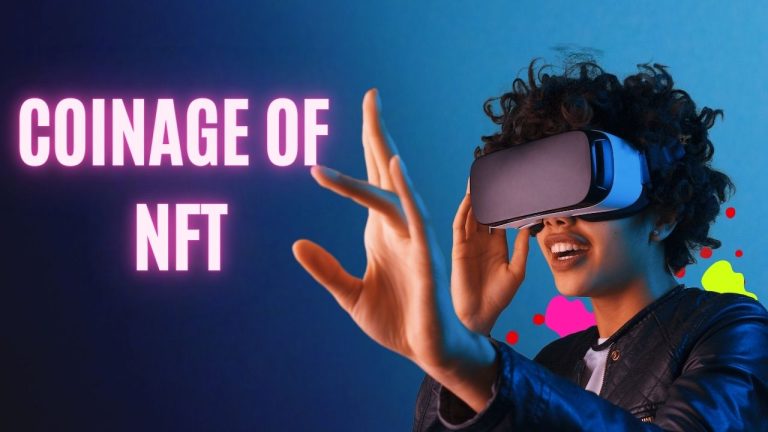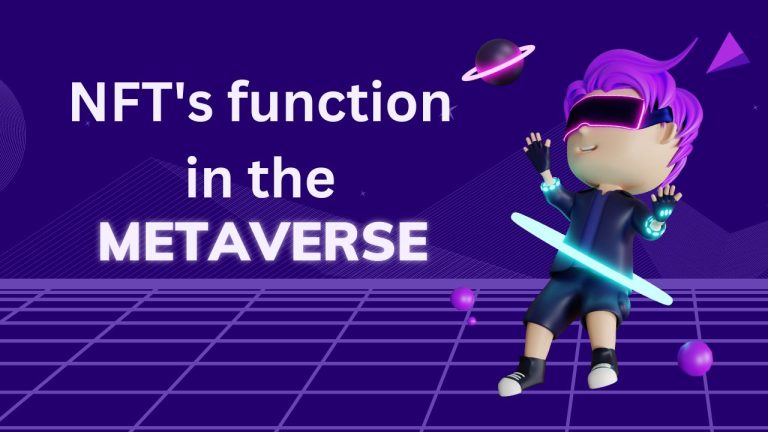Define an NFT and how does it operate?
NFT definition and meaning
The term “non-fungible token” (NFT) exists. Non-fungible objects are unique and cannot be replaced. In contrast, because they are fungible, physical cash and cryptocurrencies can be bought, sold, or swapped for one another. Due to its digital signature, each NFT is unique. NFTs are made up of digital assets like pictures, videos, audio files, or other digital formats. NFT includes, among other things, comic books, sports memorabilia, trading cards, and video games.
Introduction of an NFT
The rise of NFTs proves that the bitcoin community’s capacity for innovation is only equaled by its ability to influence new trends. However, what do NFTs represent? NFTs, or nonfungible tokens, are blockchain-verified digital objects that have properties like uniqueness and non-interchangeability. They can fit into almost any area, but they are most prominently seen in music, video games, and art that uses blockchain technology.
NFTs have particularly dominated the art market, where digital tokens are fetching tens of millions of dollars at prestigious auction houses and beyond. Young artists are recognizing that they can capitalize on their talent by using blockchain technology and NFTs, as opposed to previously posting their work for free or selling it cheaply.
Nonfungible tokens are still in their infancy despite being brought to public attention in 2017 by the decentralized application (DApp) CryptoKitties, which allows users to purchase, sell, and collect virtual cats.
These attractive digital assets caught the attention of both traders and creative types when the NFT market exploded by about 300% in 2020 to more than $250 million year-over-year. The number of NFT wallets on which NFT transactions have occurred, which nearly doubled in 2020 to more than 222,000, is another indication of expanding popularity.
How do NFTs function?
In contrast to ERC-20 tokens like DAI and LINK, NFTs are unique and cannot be divided. The Ethereum blockchain serves as a public ledger for NFTs, allowing any unique piece of digital data to be assigned or claimed to be owned.
An NFT is produced from digital elements and serves as a representation of a digital or non-digital asset. For instance, an NFT might represent actual objects like contracts, signatures, or digital works of art like songs or films. And what exactly is NFT digital art? The certificate of ownership and authenticity for NFT digital art is stored as an Ethereum-based asset.
An NFT may only have one owner at any given moment. Ownership is managed via unique and proprietary metadata that no other token can duplicate. The unique ID and metadata are produced via smart contracts, which also determine ownership and control how NFTs can be transferred.
NFT examples
NFTs can represent real-world objects like art and real estate. These physical, real-world products can be “tokenized” to increase their readability and reduce the possibility of fraud.
Art
Programmable art is the most popular NFT crypto application because it uniquely combines creativity and technology. There are currently several limited-edition pieces of artwork in circulation. Unexpectedly, they provide programmability to make modifications in a variety of circumstances. For instance, smart contracts and oracles can enable designers to develop visualizations that can respond to changes in the value of digital assets based on blockchain technology.
Fashion
Blockchain has seamlessly merged into the world of fashion with the promise of benefits for all supply chain participants. The risk of counterfeiting is eliminated because consumers can easily check the ownership information of their goods and accessories online. Users might, for instance, just scan an NFT QR code on a price tag for clothing or accessories.
Certificates and licenses
Verifying licenses and certifications can benefit greatly from NFT use cases as well. Successful students generally receive tangible or digital course completion certificates, just like any other degree or certification. Universities and employers request copies of the course completion papers as references before a business or institution provides a position to someone.
Using NFTs to obtain these licenses might save administrators a tonne of time. The burden of record checking and verification is reduced by NFT-based certifications and licenses. The method makes it simple to maintain track of documentation for course completion or licenses as a result.
Sports
The counterfeiting of goods and tickets is among the most important issues affecting the sports sector. Blockchain is the best option for efficiently resolving such issues. The immutability of blockchain technology helps to prohibit the sale of fake tickets and memorabilia.
Gaming
NFTs have already had an impact on the entire gaming landscape and the bitcoin gaming sector. In 2017, CryptoKitties was the first company to release virtual cats on the blockchain and allow users to communicate and conduct transactions with them. The model was so effective that it briefly overloaded the Ethereum network with a large number of transactions.
Since then, gaming has emerged as a major application for NFTs, which isn’t all that surprising considering the nature of in-game sales for goods like skins and more that have already captured the traditional market.
As both traditional gaming businesses and decentralized entrepreneurs seek to profit from digital cards, artwork, and even fashion on the blockchain, there has been a convergence when it comes to NFTs. NFTs and gaming go together like hands and gloves, and this combination is certain to upset the business as players look to profit not only as competitors but also as investors.
NFTs versus cryptocurrency and fiat money. What’s the distinction?
Since NFTs and cryptocurrencies are not the same things, the value of NFTs is based on the fact that these digital assets are nonfungible, which distinguishes them from cryptocurrencies. Since each NFT has a distinct set of characteristics, including size, scarcity, creator, etc., it cannot be substituted with another asset.
Bitcoin (BTC) is a fungible asset, on the other hand. If you’re lucky enough to have 1 Bitcoin and trade it for another 1, nothing changes. The amount of Bitcoin you have to spend, hold, or “hold,” remains the same.
The same is true for other types of fungible assets, such as fiat currencies like the dollar or the euro. Regardless of features like the serial number or whether you have the note in your pocket or a bank account, one dollar or euro note can be exchanged for any other dollar or euro note. If you have a coin that is valued as a collector’s item, in which case it qualifies as a nonfungible item, then you enter a murky region.
Baseball cards are another real-world example, and because they are not interchangeable, they are more similar to nonfungible tokens. The National Basketball Association (NBA), Major League Baseball (MLB), and other sports leagues, clubs, and athletes are aware of the concept of nonfungible tokens.
What is the value of NFTs?
Theoretically, anyone can tokenize their creation and offer it for sale as an NFT, however recent news stories about multimillion-dollar transactions have caught people’s attention.
For instance, Grimes made almost $6 million from the sale of some of her digital paintings. Not everything that is tokenized and sold is art. Jack Dorsey, the CEO of Twitter, sponsored an NFT of the very first tweet after bids reached $2.5 million.
The French startup Sorare, which sells NFTs of football trading cards, has raised $680 million (£498 million). However, similar to cryptocurrencies, there are worries about how the NFT may affect the environment.
Why are NFTs garnering such a lot of attention?
Depending on how broadly you define the category, NFTs initially surfaced in the cryptocurrency sector in either 2012 or 2013, but they didn’t reach the Ethereum blockchain until 2017. But now, the majority of tokens are stored on the Ethereum blockchain. Although not the only blockchain on which the tokens may be created and sold, Ethereum is the most widely used one. ERC-721 is the primary NFT standard on the Ethereum network.
On Ethereum, the wallet initiating a transaction is required to pay the miners a “gas charge” in exchange for their labor. The issue with nonfungible tokens on the Ethereum blockchain is that it is a costly network, and these gas prices can get quite high when there is a lot of demand for transactions.
The popularity of NFTs and the incapability of the existing Ethereum network to scale both contribute to the high costs. As the project switches from the proof-of-work (PoW) consensus process to proof-of-stake (PoS), also known as the shift to Ethereum 2.0, this scaling issue is expected to change (Eth2). Until then, token creators must decide whether the exorbitant costs are worthwhile if they should switch to a different blockchain, or if they should completely give up on NFTs.
NFTs have been present since 2012, but only recently have they gained popularity because of their exclusivity and celebrity ties. For instance, Logan Paul gave fans who bought his NFT collector card the chance to win first-edition packs of Pokémon cards before his fight with Floyd Mayweather.
Known as a “gold rush,” NFT trading platforms like OpenSea are seeing a rise in usage. But is this just speculative mania, a bubble that will undoubtedly burst as powerful people try to profit from intangible assets?
Although the commercial paradigm for the art world has historically included overvaluation, NFTs may offer new opportunities for emerging artists. One benefit of NFTs is that, even if the price of the artwork or music rises when it is resold, royalties are always paid to the inventor.
We might begin to picture a future without corporate labels, the greedy middlemen who make the bulk of the money in the music business.
It’s also a potentially game-changing tool for content creators involved in meme culture, for instance, who want to make money from creative endeavors that their parents probably thought were a “waste of time.” A new era of digitally monetized humor has here.
Whether you like NFTs or hate them, whether you want to buy one or add your music and artwork, NFTs cause waves. So many individuals are on the lookout for quick money possibilities or impending disasters that could arise with a notion still in its infancy. Being attentive is important.
What gives an NFT its value?
No matter if it is art or a digital collectible, the concept of scarcity will unquestionably increase the value of an NFT. But what connection exists between NFT scarcity and monkey JPEGs? Depending on who you ask, NFTs can be very expensive (or valuable) because they somehow managed to introduce scarcity into the global digital market, which was previously impossible. So an NFT is more than just an alternative to buying images.
Acquiring an NFT entails purchasing a token that will always direct users to the specific picture or digital object stored on a blockchain. However, when users mint a digital good as an NFT, they can raise its price by reducing its availability.
Will NFTs alter the landscape of the arts?
NFTs will undoubtedly change the art world. For instance, prehistoric cave art originated during the Lower Paleolithic Period, often known as the Old Stone Age, which lasted from 290,000 to 700,000 BCE. However, art has advanced greatly from cave paintings and rock carvings, and NFTs are providing creative people with new opportunities to monetize their work and get new followers.
If you’re curious about how nonfungible tokens have already altered the art market, look no further than Christie’s, an auction house with more than 250 years of history. In a JPG file, “Everyday: The First 5000 Days” by digital artist Mike Winkelmann, alias Beeple, was famously sold there for $69 million. It was a telling indicator of the times that demonstrated how much the blockchain industry has impacted contemporary art.
In terms of the revenue from an auction, this figure puts Beeple in the top three most expensive living artists. Additionally, you can be confident that the owner gets to enjoy bragging rights while the artwork can be validated on the blockchain, even though NFTs might end up hanging in a museum like some of Christie’s other well-known auctions. People’s experience is noteworthy because it demonstrates how rapidly a new artist may become well-known in the age of digital art. His involvement in the fine art world only got started when he discovered NFTs.
Asian investors were the first to sign up when Christie’s revealed that it would be selling a Beeple NFT; of the 33 bidders, roughly one-fifth were from the continent. In the end, the Singaporean cryptocurrency investor “MetaKovan” won the auction.
It’s not just Beeple who is succeeding with NFTs. Consider CryptoPunks, a collection of 10,000 bizarre 24×24-pixel creatures created on the Ethereum blockchain and including zombies and aliens. The market has been inspired by CryptoPunks, who claims to have developed the first NFT on Ethereum and spread like wildfire.
Similar to Beeple, these digital painters have achieved success through the sale of their NFT artwork, with nine pictures selling for nearly $17 million at the Christie’s auction house. The rarity of CryptoPunks is what makes them so expensive. For instance, CryptoPunk 635, one of the nine people in the gang, has a blue face with sunglasses on. There are just nine alien portraits in total in the collection.
NFTs are reimagining how the digital world works.
Non-fungible tokens are popular with investors, traders, and collectors. They are a verified version of some goods, such as a work of art, that is available to the owner only in digital form. This is especially important in fields like art, where possessing the genuine article the authentic, one-of-a-kind version is far more valuable than possessing a replica.
Consider the David statue as an illustration. Which would you like to own the real sculpture or a replica? Depending on how you value art, there is no objective way to respond to that question. A similar idea applies to NFTs, where the holders of these digital assets, whose ownership has been confirmed on the blockchain, have faith that the asset’s value will either rise or add immeasurable value to their holdings.
The value of an NFT, which is to remake the digital world, is fundamentally based on fungibility or the absence of it. NFTs profit off the notion that an auteur or creative genius bestows monumental worth on an object, much like the art industry itself.
Users can issue or purchase nonfungible tokens on a variety of markets. To do this, you typically need to have access to a digital wallet and digital currency that you can use to pay for the token you want. Such tokens can be purchased in many ways, including direct sales and auctions. Not only can NFTs be bought and sold on digital marketplaces, but they can also be sold at many prominent auction houses like Sotheby’s.
How are NFTs bought and sold?
Most NFT marketplaces function much like auction houses. You place a bid and then watch to see if you win the desired NFT. NFTs can be acquired from certain websites, such as eBay, using their “Buy Now” options for a fixed price. NFT marketplaces include OpenSea.io, SuperRare, and Foundation. the app, Rarible, and Mintable.
It’s vital to remember that each marketplace has its own specific rules for crypto wallets. There isn’t a single wallet available right now that works on every website. The most popular cryptocurrency wallet is MetaMask, although there are others as well, such as Formatic, Torus, Coinbase Wallet, and Portis.
The two ways to sell NFTs are through trading previously acquired NFTs and selling freshly minted NFTs. First, just like there are fees connected with minting an NFT, there are expenses associated with selling your non-fungible token. This will pay for final sale service fees as well as gas costs.
NFTs that have already been purchased can be sold again on the secondary market just like any other asset. Make sure the relevant NFT is in your crypto wallet and available for purchase on your favorite marketplace before you proceed. While the value of your NFT might rise over time, there is no guarantee as to its long- or even short-term value.
You can either define the “Buy Now” price or the auction rules, such as the reserve price to sell a minted NFT, depending on the service. When your NFT is sold in the future, royalties might be paid in some cases. While the value of your NFT might rise over time, there is no guarantee as to its long- or even short-term value.
NFTs do they have any issues?
Security is still a concern even though there isn’t a physical safe where NFTs can be taken. Similar to the bitcoin market itself, the NFT market is still in its infancy, where customers are being educated and developers are ironing out some issues.
There will undoubtedly be some difficulties along the way. While the architecture is still being developed, NFTs have gained attention, which might spell tragedy if it falls into the wrong hands.
It may still be difficult for newcomers to the cryptocurrency business to transmit Bitcoin (BTC) or Ether (ETH) to the correct addresses. They now need to become familiar with MetaMask wallets and the many blockchains on which NFTs can be developed due to the emergence of NFTs. The decentralized environment, where there is no third party to return funds or things to their proper owner, can be daunting to inexperienced users and may result in blunders that cannot be undone.
Security concerns are also present in the meanwhile. Although the immutable structure of the blockchain is intended to deter fraud, fraud has still occurred in the NFT industry. NFTs have not been an exception to the rule that bad actors find a way into emerging markets, including those that deal with property.
Social media accounts claim that con artists were able to intercept some accounts’ tweets and then resell them as NFTs of their own. Even though the market became aware of this conduct and Twitter has subsequently taken action against it, it serves as an illustration of the scams that can still proliferate in a developing market.
Prospects
The phenomenal rise of the NFT market was largely realized during the course of one year. Most of the well-known NFT platforms weren’t even around in 2020, but 2021 saw an incredible increase in activity and trading volume. The overall rate of adoption of NFTs (like crypto art) in the years to the future will probably be unparalleled, even if this tendency slows down.
Non-fungible tokens can be challenging to value, but a variety of factors, including originality, readability, skill, and whether the original artist is behind the sale, affect pricing. The tokens may enter yet another trend that has swept the cryptocurrency market by storm decentralized finance in the upcoming wave of the NFT market (DeFi).
FAQS:
NFTs are they cryptocurrencies?
While there are some parallels between NFTs and cryptocurrencies, there are also significant distinctions. The primary distinction is that while NFTs, as their name implies, are non-fungible, cryptocurrencies are fungible. This means that while one Bitcoin (for example) is equal to another Bitcoin, an NFT is not. Each NFT asset is distinct, and market forces define how much it is worth.
Is an NFT actual currency?
In the digital world, NFTs are “one-of-a-kind” assets that may be purchased and sold just like any other item of property, but they lack a physical form of their own. Digital tokens can be viewed as ownership documents for tangible or digital assets.
Non-fungible tokens what are they?
NFTs, or non-fungible tokens, are blockchain-based tokens that individually represent a special asset like a work of art, a piece of digital material, or other media. A digital or physical asset, whether it be digital or tangible, can be considered as having an NFT as an irrevocable certificate of ownership and authenticity.

